SpaceX Begins Deployment Of Satellite-Based Internet
Earlier this week, SpaceX deployed the first 60 satellites in a network that could result in Internet access from virtually anywhere in the world.
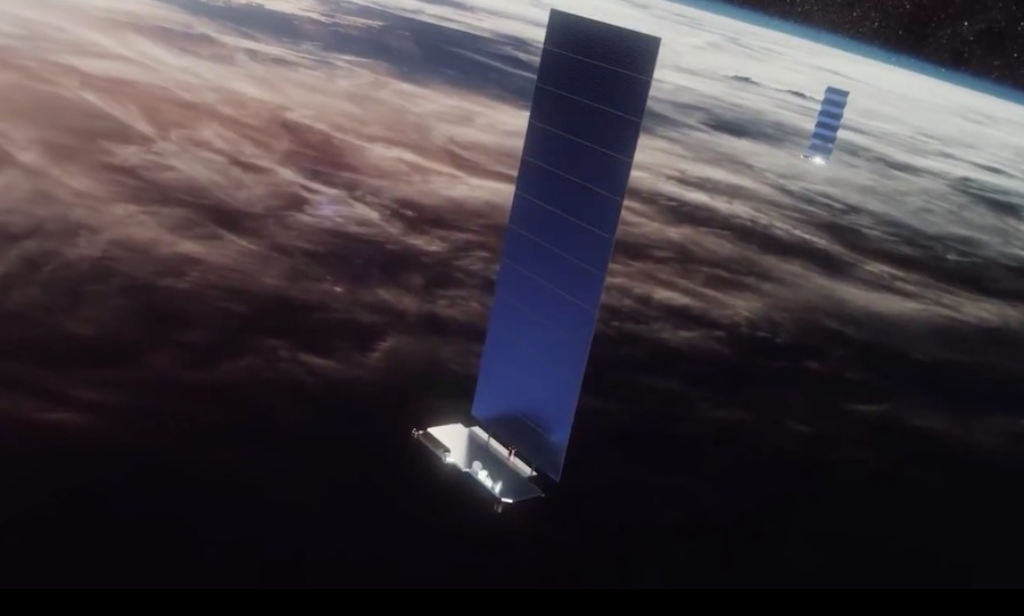
Late Thursday night, Elon Musk’s SpaceX launched 60 satellites meant to be the beginnings of a service that would provide Internet access via satellite available around the world:
On Thursday night, SpaceX launched a batch of 60 internet communications satellites from Cape Canaveral Air Force Station in Florida.
More than one hour later, some 270 miles above Earth, the cluster of satellites — part of a system called Starlink — pushed off from the rocket that carried it to orbit. The individual satellites slowly began to drift toward their singular journeys above the planet.
Elon Musk, the company’s founder and chief executive, said on Twitter early on Friday morning that all 60 satellites were “online.”
By next year, SpaceX hopes that hundreds of the devices could be circling the planet, beaming high-speed internet service everywhere. It could allow SpaceX to enter a new business that might generate revenue to finance the dream of sending people to Mars.
It was the third attempt to launch the Starlink system, after two earlier postponements last week.
SpaceX — which usually ferries cargo to orbit for NASA or private companies — is its own customer this time. And the Falcon 9 rocket was not carrying just one satellite, but 60 identical ones.
The Starlink satellites will eventually form a constellation of satellites that are to offer internet to almost anywhere on Earth.
Last year, SpaceX launched two prototype satellites, called Tintin A and Tintin B.
The payload on this launch, at more than 30,000 pounds, was the heaviest ever launched by SpaceX, Mr. Musk said during a news conference last week ahead of the postponed launch attempts. He added that these satellites would be able to relay information by bouncing the data off a ground station. However, they lack a component planned for future versions: lasers that would allow the satellites to relay information to one another.
Each of the flat-panel satellites weighs about 500 pounds, powered by a single solar array. During their deployment, they moved steadily outward from a slowly spinning core. “It will almost seem like spreading a deck of cards on a table,” Mr. Musk said.
Mr. Musk sounded a note of caution to tamp down expectations. “There is a lot of new technology here,” he said. “It’s possible that some of these satellites may not work. In fact, it’s possible, a small possibility, that all of the satellites may not work.”
As the article notes, there already are satellite-based Internet Service Providers, such as Hughes Net, that provide Internet access to people in rural and other areas that don’t have access to broadband. Starlink is different, though:
The Starlink satellites will orbit much lower — between 210 and 710 miles above the surface. That reduces the lagginess, or latency. SpaceX has said performance should be comparable to ground-based cable and optical fiber networks that carry most internet traffic today. Starlink would provide high-speed internet to parts of the world that currently are largely cut off from the modern digital world.
Because the satellites are lower, they travel faster. Thus, Starlink must provide a constellation of satellites whizzing around the planet. When one satellite moves away from one of its customers, another one must come into view in order to provide a continuous internet connection.
Mark Juncosa, vice president for vehicle engineering at SpaceX, said that with 12 additional launches, SpaceX could provide good coverage over the United States; 24 launches would put enough satellites to cover most populated areas; and 30 would cover the entire world.
Assuming that these launches continue and are successful, Starlink could potentially be a revolutionary breakthrough in bringing Internet access to parts of the world where broadband access is currently lacking, largely due to the fact that they lack the infrastructure necessary for wired internet access. This includes not only rural areas and locations that lack appropriate infrastructure in places such as Africa but also at sea and other out-of-the-way places where lack of Internet access remains a serious problem that holds back national economies. Additionally, the possibility of being able to access the Internet wirelessly from anywhere in the world would arguably make it harder for nations that seek to keep their citizens in the dark about the outside world from doing so,
For those of us who live in areas where those things aren’t an issue, such a service could provide an acceptable alternative to the state-created monopoly that is cable-based Internet access. That assumes, of course, that the speeds that a satellite-based system can offer become comparable with what is provided by other means of signal transmission. If that happens, then the whole idea of “cutting the cord” will become a more realistic possibility for many people, and it could also force land-based Internet Service Providers to reduce their prices and increase the quality of their services to attract and keep customers.
Once again, it appears that Elon Musk, for all his eccentricities, could be on to something big. Here’s hoping he succeeds.

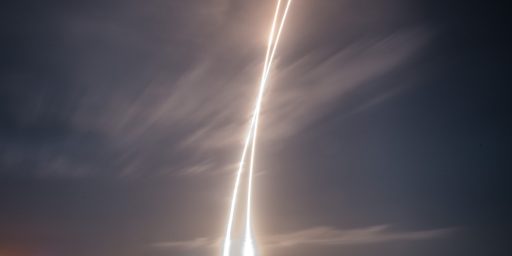
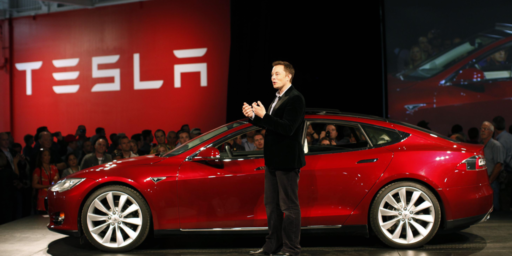
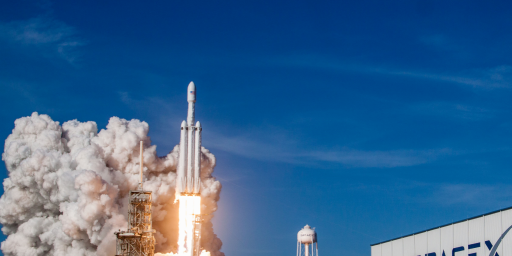
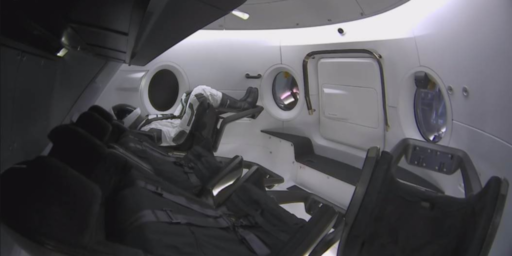
The full plan calls for over 7,000 satellites. I really hope they have deorbiting plans for all that.
@Teve:
That’s certainly an issue given everything that’s already in orbit. Another option, of course, would be the development of higher-capacity satellites so that they wouldn’t need quite as many to cover the same area. This is obviously just the beginning of the project and, as Musk says, it could end up not being viable, but if it works it could be revolutionary in terms of the ability for people to access the Internet wirelessly from virtually anywhere on the planet.
I wonder if you could get Starlink internet on an airplane.
Probably not. Airplanes are essentially closed metal tubes, and metal reflects radio waves. Even the new largely composite planes like the 787 and A350 have metal placed in the fuselage to protect against lightning strikes.
That aside, I like the idea of WiFi available everywhere. Lots of places don’t have any, or charge high rates for it (I’m looking at you, all hotels in Vegas). Sure, you can connect to the internet with your cell phone, but data charges can also be high, more so when roaming is involved.
So we’ll see how much this new SpaceX service will cost. also, how fast it is, and how it will deal with massive bandwidth demand. The latter is a big issue.
@Teve: Some place I scanned over today had this story with a headline that the earth was getting an exoskeleton. I thought that was an interesting analogy.
@Kathy:
It strikes me that if the airplane was equipped with a proper satellite receiver then you most certainly could do so. Of course then you’d have to use the airline’s WiFi most likely but it’s better than nothing.
starlink basics
@Kathy:
People use their cell phones on airplanes (mostly on the tarmac) all the time. So, not enough metal to create an effective Faraday cage.
I do not claim to have any special knowledge of the how or why. Is it all coming in through the windows? Maybe? But I don’t think so.
I have also seen people talking on their cell phones walking into elevators and still having a connection after the doors close (I worked in an office tower filled with assholes). The connection was only lost when the elevator started moving — I’m betting that the technology was never designed for a moderately rapid ascent or descent.
From all of this, I conclude that my knowledge of Faraday cages is pretty weak.
I think of poor people in remote locations all around the world suddenly, miraculously, having access to billions of pornographic images and, well, I get a little tear in my eye.
@michael reynolds: I think of poor people in remote locations around the world having internet access at prices they can afford and say “pfft, yeah right.”
Astro Twitter is saying these things are Way more visible in the night sky than Musk is claiming and furthermore that 12k of them could even be the end of ground-based astronomy.
uh oh.
@michael reynolds: I think widespread access to lesbian* pornography led to a support for same sex marriage within twenty years. This is just a good thing.
——
*: obviously two women performing for men is going to have some actual lesbian sex acts, and it’s possible that videos of actual lesbian sex acts would terrify straight men by making them feel irrelevant.
Something like this will be great for my area. We only have DSL thru Centurylink (terrible speeds, only available on routes close to a state highway, and some people are paying for “high speed” and could probably get it faster thru dial-up), 2 wireless broadband providers, and whoever provides internet thru Dish or DirecTV. We have no cable providers at all, not even in town. Anything that mixes it up a little bit, provides more options, is good.
If somebody really wanted to make a fortune, they’d open up a pizza delivery joint here. We’re 100 miles from the closest WalMart, McDonald’s, or delivery pizza. I like the lack of people, but man…..I miss pizza. Even Pizza Hut pizza. 😉
That’s … a lot of satellites. I worry about Kessler syndrome with such a massive number of satellites.
No SkyNet comments?
I’ve read a little more Astro Twitter in the last 12 hours and seen some video and these things are absolutely visible with the naked eye. 12,000 of them and you can basically forget about stargazing.
@Teve:
I was trying to get a feel for the resulting density. Let’s do some arithmetic:
4pi steradians (sr) of sky, but the satellites will be concentrated below the polar circles, so let’s say they cover 8 sr of sky. That’s 1500 sats per sr on average. The full moon subtends roughly 6e-5 sr, or 1/17000 of a sr. So, on average, at any given moment, there’s about one chance in 11 (1500/17000) that there would be a sat visible on the face of the moon.
In other units, the Hubble field of view is about 10 square minutes of arc. The moon is about 1/5 of a square degree of arc, or .2/3600 = 720 square minutes of arc. So at any given moment there is one chance in ~800 that there would be a sat in the Hubble’s field of view.
Of course, these things are moving, so the actual chance of getting photobombed would depend on the duration of the exposure… yeah, it seems like a real problem. Even before you get to Kessler Syndrome, as noted by Hal_10000, which is way more than just an annoyance.
Since I’m talking to somebody who understands things like steradians, I can tell you that among the astrophysicists I’ve been listening to, the estimate of these objects’ magnitude seems to be around +2 or +3, occasionally flashing as high as -0.5. yikes.
even worse, if this plan comes to fruition, and we’ve allowed a billionaire to unilaterally decide to take away the night sky for everyone in the world so he can sell them all internet, now it’s ruined, so up go the in-orbit Pepsi ads etc, and from now on the night sky looks like the popup ads on a 1995 Geocities page.
@Teve: That’s the great thing about the OTB comments section….you get an opportunity to learn something. I had not considered them being so bright they were visible with the naked eye, or what it would do to our starry nights. The ones they want to launch later, with the lasers to communicate satellite to satellite….are those lasers also going to be visible, or is that unknown at this point?
@Jax: while it would be kinda cool if the lasers zipped around like they do in Star Wars, they’ll almost certainly be invisible. But now that Astro People have figured out that we’re talkin about replacing the night sky with thousands of artificial stars zooming about, the likelihood of this project actually happening probably just took a big hit. They’ve already got pictures and video up of the current satellites and they’re clearly visible.
@Teve:
They are right. It’s going to be a massive problem. I’m curious how this is just happening without any public input. You can’t even put a cell tower without impact statements.
@Teve: I noticed that, I went from here to Twitter and searched, they are definitely visible for far longer than Elon Musk claimed they would be.
@Hal_10000: How do we regulate something like this on a global scale? I mean, the sane countries could probably come to an agreement, but they’ll never get the US to the table with Trump on his “regulations are bad if they stop money from being made” kick.
@Teve:
As always, there’s a Golden Age science fiction story that is on topic: “Pi in the Sky“, by Fredric Brown
@Teve:
Totally invisible from the ground, yes. If the laser isn’t aimed at you, the only way you can see it is from scattered light off particles in the beam. There aren’t enough particles in LEO to make the beam visible.
It sounds like Musk thinks he has licked the technical issues that helped derail the Air Force’s TSAT program.
@DrDaveT:
Low Earth Orbit corresponds to an orbital period of 2 hours or less. 360 degrees in 120 minutes would be 3 degrees per minute. That’s half the angular speed of the minute hand on a clock, which sounds slow. On the other hand, the full moon is half a degree across, so it would take less than 10 seconds for a sat to transit a diameter of the full moon.
@DrDaveT:
There are barely enough on Earth as it is. That’s why laser tag places use synthetic fog. Also, when you see a thief in a movie using powder or spray to spot security system laser beams, that’s entirely accurate (though the Mythbusters showed you can trigger the system by using too much powder so it interrupts the beam).
The lasers in Star Wars would have been invisible, or are terribly inefficient and scatter their energy all over the place.
But one shouldn’t let physics get in the way of cool visual effects.